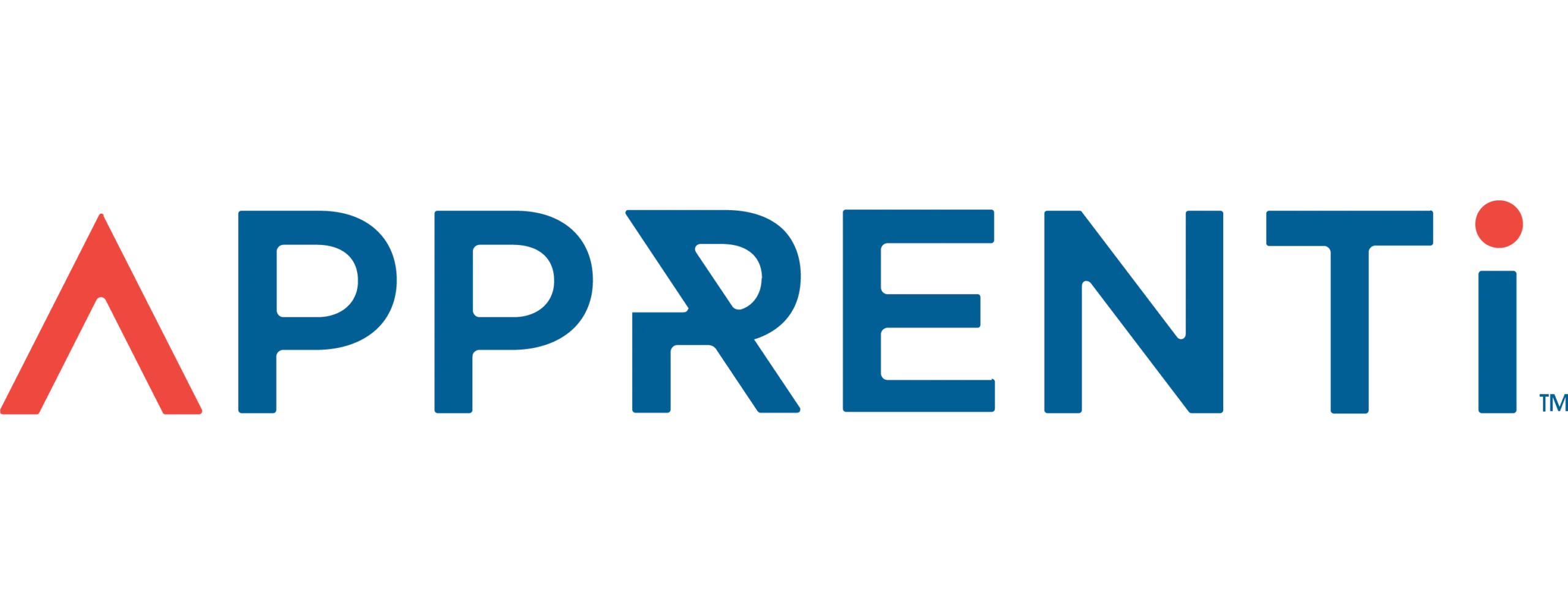Understanding how to start an electrician apprenticeship goes beyond just hiring—it means setting up every apprentice for long-term success. The onboarding process can be overwhelming for program managers and training leads, especially at mid-sized to large contracting companies. From eligibility checks to document submissions, managing apprentice requirements involves a mountain of paperwork, compliance deadlines, and follow-ups.
Without a clear system, things can easily fall through the cracks, leading to delays, missed steps, or even regulatory issues. That’s why having a solid onboarding checklist is essential.
This article provides a practical, step-by-step guide on how to start an electrician apprenticeship the right way. It walks you through each stage: verifying eligibility, collecting required documents, assigning mentors, and tracking progress through to program completion. With a streamlined approach and the right tools, you can reduce admin stress and focus on helping your apprentices succeed from day one.
Want to Learn More About Your Registered Apprenticeship Opportunities?
BOOK A FREE CONSULTATION
The Strategic Imperative: Building a Resilient Electrician Apprenticeship Program
Building a strong electrician apprenticeship program isn’t just a smart move—it’s a business necessity. With skilled labor shortages continuing to impact growth, profitability, and productivity, contracting companies must focus on developing talent from within to stay competitive in the long run.
Beyond filling job openings, apprenticeships offer a structured way to prepare workers who understand your standards, prioritize safety from day one, and grow alongside your company. When done right, they build long-term resilience and raise the overall quality of your workforce.
The Problem with Traditional Management
Despite the growing importance of apprenticeships, many programs are still managed using outdated methods—paper forms, scattered spreadsheets, and manual follow-ups. These inefficiencies don’t just slow things down; they introduce risk. Documents go missing, errors creep in, and progress stalls when tracking systems fail.
For example, imagine managing a batch of 20 apprentices. Each must submit a stack of paperwork—applications, certifications, agreements, and health clearances. Collecting, verifying, and tracking all this manually can eat up hours each week, time that should be spent on mentorship, safety, and skills development.

A Smarter Way to Manage Apprenticeships
To overcome these challenges, adopting a digital-first approach is no longer optional—it’s essential. Using a centralized platform, you can manage onboarding, compliance, mentorship, and reporting in one place. A workforce planning consulting relationship can help you develop your program and highlight apprenticeship grants eligibility.
In the following sections, we’ll break down the apprenticeship process into three critical phases—Eligibility, Enrollment, and Ongoing Management—with practical tips on streamlining each one using modern tools and more intelligent workflows.
Phase 1: Pre-Enrollment and Eligibility
The journey starts well before your apprentices set foot on the job site. A thorough screening process ensures that candidates are qualified, committed, and ready for the demands of the trade. Getting this right upfront helps avoid issues later and sets the foundation for long-term success.
What to Check
To begin with, candidates should meet basic qualifications. Most programs require apprentices to be at least 18 years old, hold a high school diploma or GED, and pass basic math and reading assessments. These checks confirm a foundational level of academic readiness.
In addition, physical capability is essential. Electrical work can be strenuous, involving climbing, lifting, or working in confined spaces. Therefore, a basic physical exam is often required to ensure safety and performance on the job.
Lastly, all apprentices must be legally authorized to work in the U.S., which includes completing the I-9 form and submitting proper identification.
Go Beyond the Basics
Once the minimum requirements are met, it’s time to dig deeper. A structured interview process helps assess soft skills, communication, and attitude, traits that often predict long-term success.
Moreover, verifying references, conducting background checks, and performing drug screenings, where applicable, is essential. These steps protect both your team and your company’s reputation.
Candidates who show promise but aren’t quite ready should consider recommending or partnering with pre-apprenticeship programs. These preparatory tracks can help build skills and confidence while creating a steady pipeline of future-ready workers.
Phase 2: Enrollment and Onboarding – Turning Acceptance into Action
Once a candidate clears your eligibility criteria, the enrollment phase becomes the moment to make the apprenticeship feel real. This step involves signing official documents like the apprenticeship agreement, I‑9 forms, and safety certificates. But it’s more than forms—it’s about setting transparent expectations, outlining responsibilities, and preparing apprentices for day‑one success in a safe working environment. For many, this is the moment training shifts from theory to practice, and a clear, welcoming start can significantly boost confidence and reduces confusion.
A streamlined onboarding isn’t just efficient—it drives results. Studies show that well-structured onboarding boosts retention by up to 82% and productivity by over 70%. Automating paperwork cuts errors and frees managers to focus on mentoring. In short, a clean and clear enrollment process sets the stage for a safe, efficient, and committed apprenticeship.

Key Documentation You Need to Collect
Proper documentation is the foundation of a compliant, organized apprenticeship program. At this stage, you’re building a complete and auditable apprentice file.
- Signed Apprenticeship Agreement
This contract, often standardized by the DOL or your state agency, outlines the roles, responsibilities, duration, wage progression, and training expectations for both the apprentice and employer. - I-9 Form and Work Eligibility Documents
Federal law requires proof that each apprentice is authorized to work in the U.S. Completing and securely storing the I-9 form, along with valid ID documents, is non-negotiable. - Educational Records and Certifications
Collect official transcripts, diplomas (or GED equivalents), and any relevant certifications, like OSHA 10/30 training or CPR. These documents confirm readiness and can impact program placement. - Emergency Contacts and Medical Releases
Having up-to-date emergency contact information and signed release forms ensures you can respond appropriately in case of on-site accidents or health emergencies. - Policy Acknowledgments
Apprentices should formally acknowledge their understanding of your safety protocols, code of conduct, attendance expectations, and drug-free workplace policy. This helps establish clear ground rules from the start. - Payroll, Benefits, and Tax Forms
Set up apprentices in your HR system with completed W-4 forms, direct deposit details, and, if applicable, benefits enrollment. Smooth setup ensures timely compensation and reduces early-stage frustration.
Onboarding That Builds Momentum
Beyond completing forms, onboarding is your chance to engage apprentices and give them a confident start. The experience should be structured, welcoming, and safety-focused.
- Safety Orientation
Before stepping onto the job site, every apprentice should complete an orientation covering key safety topics: PPE usage, arc flash awareness, lockout/tagout procedures, and hazard recognition. This isn’t just compliance—it’s culture-building. - Issuance of PPE and Starter Tools
Provide your apprentices the essential gear to work safely and efficiently—helmets, gloves, glasses, and any required tools. This shows you’re invested in their readiness and professional growth. - Assignment to a Journeyman Mentor
A dedicated mentor gives each apprentice a go-to person for questions, feedback, and real-world training. Mentorship strengthens learning, builds relationships, and improves retention. - Introduction to Company Culture and Team
Walk apprentices through your company’s mission, values, and operations. Help them understand how they fit into the bigger picture—and allow them to meet key team members early. - Program Expectations and Roadmap
Clearly outline the structure of the apprenticeship, including required hours (OJT and RTI), evaluation timelines, and the pathway to journeyman status. Transparency here builds trust and prevents miscommunication down the line.
Why This Phase Matters
A strong onboarding process does more than check compliance boxes—it shapes the apprentice’s first impression and influences their long-term success. Poor onboarding can lead to confusion, safety risks, or early dropout. But a straightforward, structured approach backed by automation ensures every apprentice is prepared, protected, and positioned to thrive.
Phase 3: Managing Apprentice Compliance and Ongoing Development
Once apprentices are fully onboarded, your role shifts to active guidance and oversight. This means not only tracking their on‑the‑job training (OJT) and related technical instruction (RTI), but also regularly reviewing progress and performance. Using a centralized tracking system helps you stay updated and automate compliance checks, reducing paperwork and freeing time to mentor. This hands-on approach ensures each apprentice receives timely support and direction, helping them truly develop their skills.
This level of engagement also safeguards your program against risk, inefficiency, and burnout. Research shows structured apprenticeship systems boost productivity and reduce burnout and turnover, improving long-term outcomes for both apprentices and employers. By setting clear milestones and maintaining organized documentation, you minimize errors and compliance issues while keeping momentum and morale high throughout the training journey.

Track Progress and Performance
Growth takes time, but without the right tracking systems, it’s easy to lose sight of how far apprentices have come—or where they’re falling behind. Monitoring OJT and RTI progress isn’t just about compliance; it’s about making informed decisions to support your apprentices at every step.
- Work Process Hour Logging and Verification: Apprentices must log their On-the-Job Training (OJT) hours by task or skill category. Their assigned journeyman should regularly review and sign off on these logs to ensure accuracy and accountability.
- Related Technical Instruction (RTI) Tracking: Keep a close eye on class attendance, grades, and total RTI hours completed. Many programs require around 144 hours of instruction annually, so verifying these in real time is critical, not just at the end.
- Regular Performance Reviews: Schedule periodic evaluations (e.g., quarterly) to assess technical skills, work ethic, and professional development. Use feedback loops between mentors and managers to guide improvements and track readiness for progression.
Maintain Ongoing Compliance and Oversight
Compliance isn’t just about paperwork—it’s the foundation of a legally sound and trusted program. Staying organized and ahead of requirements avoids costly mistakes and demonstrates your program’s credibility to stakeholders and regulators.
- Internal Record Audits
Periodically review files to ensure all documents—agreements, certifications, progress logs—are current and correctly filed. This keeps your program compliant and avoids last-minute scrambles during external audits. - Required Reports for DOL and State Agencies
Prepare and submit regular reports on apprentice progress, demographics, and program status. A digital platform can make this nearly automatic, reducing reporting errors. - Handle Program Changes and Terminations
Apprentices may transfer, take leave, or exit the program early. Each of these requires documentation and proper notifications to relevant agencies to avoid compliance issues. - Administer Pay Increases Based on Milestones
Many programs feature a wage progression schedule. As apprentices complete required hours or skill blocks, their pay should increase. Managing this fairly and on time builds trust and motivation. - Provide Clear Channels for Grievances and Support
Apprentices need safe, reliable ways to voice concerns—whether it’s a mentor issue, safety violation, or personal matter. A good program outlines clear steps for submitting concerns and getting support.
Support Mentorship and Culture-Building
A successful apprenticeship is about more than technical mastery—it’s about relationships. Pairing apprentices with effective mentors, maintaining open communication, and fostering a learning culture are what truly elevate your program beyond the checklist.
- Train Journeymen Mentors
Don’t assume every skilled electrician knows how to teach. Offer guidance on mentorship best practices, communication, feedback, and how to log apprentice performance properly. - Encourage Open Communication
Use digital platforms or scheduled check-ins to keep communication flowing between mentors, apprentices, and program managers. Transparency keeps expectations clear and issues addressed early. - Promote a Learning Culture
Empower apprentices to take initiative. Encourage knowledge-sharing among peers and offer optional learning modules or tool talks. This builds pride and ownership in their growth.
Measuring Success and Proving ROI: Turning Data Into Strategic Value
A successful apprenticeship program isn’t just about meeting compliance—it’s about delivering real, measurable benefits. The true worth of your program lies in how it drives core business results: high apprentice retention, increased productivity, reduced hiring costs, and long-term staff readiness. For example, employers report a 92% retention rate after apprenticeship completion, and see up to a 44% return on investment—gains that directly impact the bottom line.
For program managers, quantifying that impact means transforming routine tracking into data-driven insights that resonate with leadership. Monitoring metrics like completion rates, hours logged, performance evaluations, and wage progression lets you demonstrate clear ROI.
These insights show that apprentices aren’t just learning—they’re actively contributing to company goals, helping to build a skilled, loyal workforce tailored to your needs.

Key Metrics That Matter
To evaluate your program’s effectiveness, you need to track the right performance indicators. These metrics not only help you refine your strategy but also support requests for funding and expansion.
- Apprentice Retention Rates
For starters, retention rates directly determine how well your program engages and supports apprentices. The higher the retention, the stronger the indication that your mentorship and structure are working. - Completion and Certification Rates
In addition to retention, completion rates reveal how many apprentices reach journeyman status. When your program consistently beats national averages, it proves your structure is effective and scalable. - Time to Journeyman Certification
Moreover, tracking how long it takes apprentices to complete their training shows how efficient your program is. Shorter timeframes—without compromising quality—mean faster deployment of skilled workers. - Safety Incident Rates
Equally important, safety data reflects your program’s commitment to proper training and oversight. A low incident rate confirms that apprentices receive the necessary safety knowledge and supervision. - Productivity Gains
Beyond safety, the output of newly certified journeymen tells the story of your program’s actual value. Their performance can be directly compared to external hires to show gains in efficiency and quality. - Cost Savings from Internal Development
Finally, calculate the difference between training apprentices versus hiring skilled labor externally. The savings from reduced recruiting, onboarding, and turnover quickly add up, proving your ROI in complex numbers.
Making the Case to Senior Leadership
Once you’ve gathered the correct data, the next step is telling the story in a way that resonates with decision-makers. Your insights should frame the apprenticeship program as a strategic investment, not just an operational necessity.
- Reduced Admin Time and Costs
First, show how automation has reduced the hours spent on manual tracking and reporting. Not only does this save money, but it also allows your team to focus on more meaningful work, like mentorship and engagement. - Proven Compliance and Risk Management
Additionally, highlight your program’s ability to stay ahead of deadlines and audit requirements. This kind of operational reliability builds trust with leadership and with regulatory bodies. - Workforce Loyalty and Growth
Furthermore, apprentices who grow with your company often stay longer. Show how your program nurtures a loyal, culture-aligned team that’s easier to retain and promote over time. - Clear, Data-Backed Repo
Continuous Improvement and Long-Term Scalability
Even the best apprenticeship programs can’t afford to stand still. As your company evolves, so must your training initiatives—especially in a changing trade like the electrician pathway. By carefully tracking metrics like training hours, mentor evaluations, and completion rates, you gain insights into what’s working and what isn’t. With real data in hand, you can quickly identify friction points—whether it’s a lagging module or a mentor who consistently drives success—and take targeted steps to improve curriculum, resources, and support.
Using data strategically also helps your program scale wisely as your business expands. As you add locations, trades, or cohorts, maintaining consistency can quickly become a challenge. Analytics help you uncover where scalable systems are succeeding and where gaps exist, allowing you to replicate high-performing mentorship models or anticipate surges in training materials or PPE. Rather than guess at growth, you build an agile apprenticeship framework—one that adapts with you, maintains quality, and empowers your talent pipeline to thrive.

- Use Data to Refine and Optimize
For example, performance insights can help you pinpoint which parts of the curriculum are most effective or where changes are needed. This continuous improvement loop keeps your program sharp and responsive. - Plan for Scalable Growth
As demand for electricians increases, your program should be able to grow without overwhelming your team. A digital platform makes it easier to expand while maintaining consistency and compliance. - Stay Current with Industry Changes
In addition, staying up to date with evolving standards (like NEC updates or licensing changes) ensures your apprentices are continuously trained to meet today’s requirements, not yesterday’s. - Future-Proof Your Skilled Workforce
Ultimately, the goal is to build a sustainable pipeline of skilled talent. Apprenticeship programs that adapt and scale will position your company for long-term success in an unpredictable labor market.
Final Thoughts: Build Smarter, Lead Better
Managing an apprenticeship program—across eligibility, compliance, and growth—is complex. But with the right tools and strategy, it becomes a powerful asset. A modern platform takes the burden out of paperwork, enhances visibility, and keeps everything running smoothly.
Ready to simplify apprenticeship onboarding and compliance? Explore how our platform automates your checklist and transforms your program into a strategic advantage.















